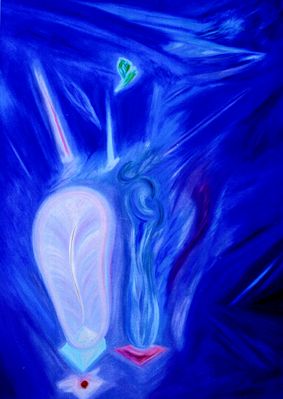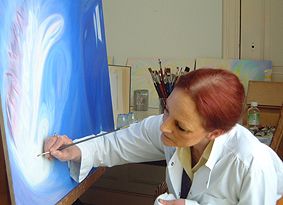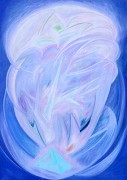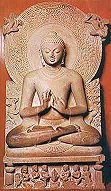Station Play - Blauwe Galm - Dhammapada
| piano quartet # 14 BBWV 2019.01 | ||||||||||||||||||||||||||||||||||||||||||||||||||||||||||||||||||||||||||||||||||||||||||||||||||||||||||||||||||||||||||||||||||||||||||||||||||||||||||||||||||||||||||||||||||||||||||||||||||||||||||||||||||||||||||||||||||||||||||||||||||||||||||||||||||||||||||||||||||||||||||||||||||||||||||||||||||||||||||||||||||||||||||||||||||||||||||||||||||||||||||||||||||||||||||||||||||||||||||||||||||||||||||||||||||||||||||||||||||||||||||||||||||||||||||||||||||||||||||||||||||||||||||||||||||||||||||||||||||||||||||||||||||||||||||||||||||||||||||||||||||||||||||||||||||||||||||||||||||||||||||||||||||||||||||||||||||||||||||||||||||||||||||||||||||||||||||||||||||||||||||||||||||||||||||||||||||||||||||||||||||||||||||||||||||||||||||||||||||||||||||||||||||||||||||||||||||||||||||||||||||||||||||||||||||||||||||||||||||||||||||||||||||||||||||||||||||||||||||||||||||||||||||||||||||||||||||||||||||||||||||||||||||||||||||||||||||||||||||||||||||||||||||||||||||||
| Kenko Tzurezuregusa Het werk commentarieert de Tzurezuregusa van Yoshida Kenko(ca1283-ca1352). De muziek volgt wel de nummering zoals te vinden in : Kenko and Chomei Essays in Idleness and Chomei vertaling uit het Japans in het Engels door Meredith McKinney, uitgave Penguin Classics, England etc, ISBN 978-0-141-19210-9. Deze uitgave van de volledige Tzurezuregusa bestaat uit een preface en 243 nummers. Deze heb ik in willekeurige volgorde gebruikt alnaargelang de dag het mij ingaf. Ik lette er dan wel op dat de voor mij minder boeiende excerpten niet allemaal achteraan bengelden.Ik heb mij bij het schrijven elke mogelijke vrijheid veroorloofd, ook tegenover de tekst. Het literaire genre van Zuihitsu betekent zoveel als “volg het penseel” en dat heb ik naar de geest toegepast. Om het even welke keuze, of liefst nog het geheel, kan in om het even welke volgorde uitgevoerd worden. Boudewijn Buckinx 17 december 2018, 9 juni 2019. 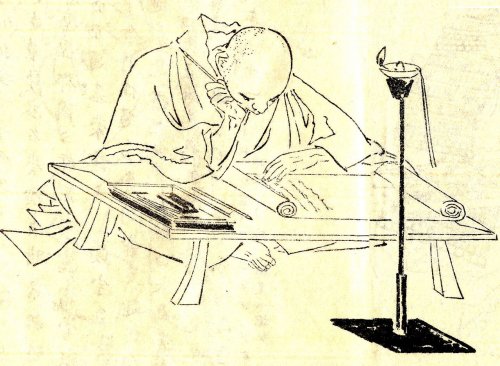 Pianokwartet # 14 BBWV 2019.01
|
||||||||||||||||||||||||||||||||||||||||||||||||||||||||||||||||||||||||||||||||||||||||||||||||||||||||||||||||||||||||||||||||||||||||||||||||||||||||||||||||||||||||||||||||||||||||||||||||||||||||||||||||||||||||||||||||||||||||||||||||||||||||||||||||||||||||||||||||||||||||||||||||||||||||||||||||||||||||||||||||||||||||||||||||||||||||||||||||||||||||||||||||||||||||||||||||||||||||||||||||||||||||||||||||||||||||||||||||||||||||||||||||||||||||||||||||||||||||||||||||||||||||||||||||||||||||||||||||||||||||||||||||||||||||||||||||||||||||||||||||||||||||||||||||||||||||||||||||||||||||||||||||||||||||||||||||||||||||||||||||||||||||||||||||||||||||||||||||||||||||||||||||||||||||||||||||||||||||||||||||||||||||||||||||||||||||||||||||||||||||||||||||||||||||||||||||||||||||||||||||||||||||||||||||||||||||||||||||||||||||||||||||||||||||||||||||||||||||||||||||||||||||||||||||||||||||||||||||||||||||||||||||||||||||||||||||||||||||||||||||||||||||||||||||||||
| | ||||||||||||||||||||||||||||||||||||||||||||||||||||||||||||||||||||||||||||||||||||||||||||||||||||||||||||||||||||||||||||||||||||||||||||||||||||||||||||||||||||||||||||||||||||||||||||||||||||||||||||||||||||||||||||||||||||||||||||||||||||||||||||||||||||||||||||||||||||||||||||||||||||||||||||||||||||||||||||||||||||||||||||||||||||||||||||||||||||||||||||||||||||||||||||||||||||||||||||||||||||||||||||||||||||||||||||||||||||||||||||||||||||||||||||||||||||||||||||||||||||||||||||||||||||||||||||||||||||||||||||||||||||||||||||||||||||||||||||||||||||||||||||||||||||||||||||||||||||||||||||||||||||||||||||||||||||||||||||||||||||||||||||||||||||||||||||||||||||||||||||||||||||||||||||||||||||||||||||||||||||||||||||||||||||||||||||||||||||||||||||||||||||||||||||||||||||||||||||||||||||||||||||||||||||||||||||||||||||||||||||||||||||||||||||||||||||||||||||||||||||||||||||||||||||||||||||||||||||||||||||||||||||||||||||||||||||||||||||||||||||||||||||||||||||
| NFRW | ||||||||||||||||||||||||||||||||||||||||||||||||||||||||||||||||||||||||||||||||||||||||||||||||||||||||||||||||||||||||||||||||||||||||||||||||||||||||||||||||||||||||||||||||||||||||||||||||||||||||||||||||||||||||||||||||||||||||||||||||||||||||||||||||||||||||||||||||||||||||||||||||||||||||||||||||||||||||||||||||||||||||||||||||||||||||||||||||||||||||||||||||||||||||||||||||||||||||||||||||||||||||||||||||||||||||||||||||||||||||||||||||||||||||||||||||||||||||||||||||||||||||||||||||||||||||||||||||||||||||||||||||||||||||||||||||||||||||||||||||||||||||||||||||||||||||||||||||||||||||||||||||||||||||||||||||||||||||||||||||||||||||||||||||||||||||||||||||||||||||||||||||||||||||||||||||||||||||||||||||||||||||||||||||||||||||||||||||||||||||||||||||||||||||||||||||||||||||||||||||||||||||||||||||||||||||||||||||||||||||||||||||||||||||||||||||||||||||||||||||||||||||||||||||||||||||||||||||||||||||||||||||||||||||||||||||||||||||||||||||||||||||||||||||||||
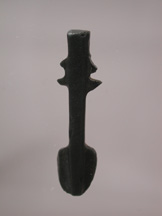 One of the more startling treatises about music to appear in recent years is Norman Lebrecht’s book. It has the intriguing title When the Music Stops. This commentary, by contrast, is being written before the music starts. I write this before even the slightest note has been put down on paper, which is not a common but nevertheless an interesting procedure. It allows me to clarify my intentions, and communicate to you the decisions I have to make before any music starts. The very first decision is the fundamental one, namely, the general question of my place in the field of music of today. Many composers don’t have to question where they are situated because they are fixed and settled, and see the walls of their creative existence as self-evident. I am much luckier, urged as I am to widen my scope. You might think this situation is one of discomfort and entails uncertainty and doubt. Before I make up my mind, this is indeed the case. But afterwards I am more confident than composers who do not question their aesthetic point of departure. In this instance, I have resolved to write a beautiful piece, which is to be played according to the highest musical standards of performance, and in the context of a very interesting festival. I have always been interested in Egyptian hieroglyphics and language. The hieroglyph for beautiful, well-done, perfect and interesting is one and the same, nefer. Festival means w. Neferew is consequently a very appropriate title. After the rehabilitation of the idea of beauty during the last decades of the last century, it is once again disgraced as something not attuned to our time. One of the more startling treatises about music to appear in recent years is Norman Lebrecht’s book. It has the intriguing title When the Music Stops. This commentary, by contrast, is being written before the music starts. I write this before even the slightest note has been put down on paper, which is not a common but nevertheless an interesting procedure. It allows me to clarify my intentions, and communicate to you the decisions I have to make before any music starts. The very first decision is the fundamental one, namely, the general question of my place in the field of music of today. Many composers don’t have to question where they are situated because they are fixed and settled, and see the walls of their creative existence as self-evident. I am much luckier, urged as I am to widen my scope. You might think this situation is one of discomfort and entails uncertainty and doubt. Before I make up my mind, this is indeed the case. But afterwards I am more confident than composers who do not question their aesthetic point of departure. In this instance, I have resolved to write a beautiful piece, which is to be played according to the highest musical standards of performance, and in the context of a very interesting festival. I have always been interested in Egyptian hieroglyphics and language. The hieroglyph for beautiful, well-done, perfect and interesting is one and the same, nefer. Festival means w. Neferew is consequently a very appropriate title. After the rehabilitation of the idea of beauty during the last decades of the last century, it is once again disgraced as something not attuned to our time.Maybe you wonder whether my music is new music at all. I may ask you in return whether that is a good question. In the late 19th century some Italian scholars asked whether Puccini was really Italian music. I don’t think that question is relevant where art is concerned. But if you insist, Puccini really is Italian music just as Buckinx really is new music. Defending his lack of realistic representation, Paul Klee compared artistic creation with a tree. Experiences, influences, and observations are being soaked up by the roots, after which they pass through the trunk before resulting in the crown. Leaves or blossoms do not bear any resemblance to the roots, nor to the substances absorbed. His metaphor of course refers to the expressionist attitude to art, but I think it holds true for all creative activity. I live with open eyes in this world, but I do not throw bombs –which seems to be the normal activity- and my response is more than ever before to commit beauty, and that is my free decision. BB May 2nd 2005 Created Thursday November 17th 2005 at the Schauspielhaus, Bochum (Germany) by The Luxemburg Sinfonietta. |
||||||||||||||||||||||||||||||||||||||||||||||||||||||||||||||||||||||||||||||||||||||||||||||||||||||||||||||||||||||||||||||||||||||||||||||||||||||||||||||||||||||||||||||||||||||||||||||||||||||||||||||||||||||||||||||||||||||||||||||||||||||||||||||||||||||||||||||||||||||||||||||||||||||||||||||||||||||||||||||||||||||||||||||||||||||||||||||||||||||||||||||||||||||||||||||||||||||||||||||||||||||||||||||||||||||||||||||||||||||||||||||||||||||||||||||||||||||||||||||||||||||||||||||||||||||||||||||||||||||||||||||||||||||||||||||||||||||||||||||||||||||||||||||||||||||||||||||||||||||||||||||||||||||||||||||||||||||||||||||||||||||||||||||||||||||||||||||||||||||||||||||||||||||||||||||||||||||||||||||||||||||||||||||||||||||||||||||||||||||||||||||||||||||||||||||||||||||||||||||||||||||||||||||||||||||||||||||||||||||||||||||||||||||||||||||||||||||||||||||||||||||||||||||||||||||||||||||||||||||||||||||||||||||||||||||||||||||||||||||||||||||||||||||||||||
| | ||||||||||||||||||||||||||||||||||||||||||||||||||||||||||||||||||||||||||||||||||||||||||||||||||||||||||||||||||||||||||||||||||||||||||||||||||||||||||||||||||||||||||||||||||||||||||||||||||||||||||||||||||||||||||||||||||||||||||||||||||||||||||||||||||||||||||||||||||||||||||||||||||||||||||||||||||||||||||||||||||||||||||||||||||||||||||||||||||||||||||||||||||||||||||||||||||||||||||||||||||||||||||||||||||||||||||||||||||||||||||||||||||||||||||||||||||||||||||||||||||||||||||||||||||||||||||||||||||||||||||||||||||||||||||||||||||||||||||||||||||||||||||||||||||||||||||||||||||||||||||||||||||||||||||||||||||||||||||||||||||||||||||||||||||||||||||||||||||||||||||||||||||||||||||||||||||||||||||||||||||||||||||||||||||||||||||||||||||||||||||||||||||||||||||||||||||||||||||||||||||||||||||||||||||||||||||||||||||||||||||||||||||||||||||||||||||||||||||||||||||||||||||||||||||||||||||||||||||||||||||||||||||||||||||||||||||||||||||||||||||||||||||||||||||||
| Renaissance Revisited, BBWV 2006.1 | ||||||||||||||||||||||||||||||||||||||||||||||||||||||||||||||||||||||||||||||||||||||||||||||||||||||||||||||||||||||||||||||||||||||||||||||||||||||||||||||||||||||||||||||||||||||||||||||||||||||||||||||||||||||||||||||||||||||||||||||||||||||||||||||||||||||||||||||||||||||||||||||||||||||||||||||||||||||||||||||||||||||||||||||||||||||||||||||||||||||||||||||||||||||||||||||||||||||||||||||||||||||||||||||||||||||||||||||||||||||||||||||||||||||||||||||||||||||||||||||||||||||||||||||||||||||||||||||||||||||||||||||||||||||||||||||||||||||||||||||||||||||||||||||||||||||||||||||||||||||||||||||||||||||||||||||||||||||||||||||||||||||||||||||||||||||||||||||||||||||||||||||||||||||||||||||||||||||||||||||||||||||||||||||||||||||||||||||||||||||||||||||||||||||||||||||||||||||||||||||||||||||||||||||||||||||||||||||||||||||||||||||||||||||||||||||||||||||||||||||||||||||||||||||||||||||||||||||||||||||||||||||||||||||||||||||||||||||||||||||||||||||||||||||||||||
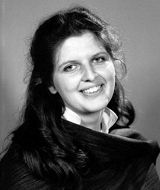 Thérèse Malengreau, an excellent pianist who made a unique CD of belgian music, enjoyable from the first to the last note, expressed some day her wish to play a programme conceived as one coherent unity, which should include also a larger piece by myself.
Thérèse Malengreau, an excellent pianist who made a unique CD of belgian music, enjoyable from the first to the last note, expressed some day her wish to play a programme conceived as one coherent unity, which should include also a larger piece by myself.The first idea was to construct a chain of pieces, each one reflecting the previous one. I do remember the piece I'm Sitting in a Room of Alvin Lucier, in which whatever text is been recorded live, starting up a process of neverending re-recording of the first recording. Step by step the verbal text is converted in sounds, some of which take dominance over the other ones, up to the point where the spoken text has become totally musical. Something like this I would do, not in a technical sense, but as a mental process. 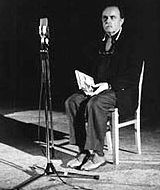 As a point of departure I had chosen the Renaissance. The chain should link Sonetto 47 del Petrarca from Les années de pèlerinage by Franz Liszt, to A Little Suite For Christmas A.D.1979 after Giotto's Nativity Frescoes in the Arena Chapel at Padua by George Crumb. As a point of departure I had chosen the Renaissance. The chain should link Sonetto 47 del Petrarca from Les années de pèlerinage by Franz Liszt, to A Little Suite For Christmas A.D.1979 after Giotto's Nativity Frescoes in the Arena Chapel at Padua by George Crumb. Discussing this idea with Thérèse Malengreau, we almost immediately were mentioning other works related to the idea of Renaissance, rather than concentrating on the idea of revisiting re- and more re- and re- again. When I was still working at the radio, we often had to make programmes with a certain theme. I think, as I thought in those days, that it is not a good idea to press different musical works together only because they announce in their title a similar subject. After La mer of Claude Debussy, it is unattractive to listen to Saint François marchant sur les flots of Liszt. So we decided to abandon any restrictive system, and to start in a much freer way. Not the objects or relicts of the Renaissance, even less their catalogue, but the (reflection on the) inspiration that other composers found in it, became the real subject of the piece. The Renaissance  In his poem Altercazione Lorenzo de' Medici describes the playing of the lyre by the Florentine philosopher Marsilio Ficino (1433-1499) : In his poem Altercazione Lorenzo de' Medici describes the playing of the lyre by the Florentine philosopher Marsilio Ficino (1433-1499) :Una nuova voce a se gli trasse Da più harmonia legati e presi, Pensai che Orfeo al mondo ritornasse. Ficino tried to reconcile three older traditions, the Platonic, the gnostics and neo-platonics and the Arabian. In 1462 Cosimo de' Medici bestowed him of the villa at Careggi for the newly founded Platonic Academy. Ficino had already been one of the leading humanists in the first Platonic Academy of Cosimo de' Medici, founded in 1457 in Firenze. Hermes Trismegistus is to believed to have lived in ancient times in Egypt, Plotinus and the Arabian mystics are medieval. Only Plato really lived during the classical era of the Greek antiquity and consequently suits our traditional idea of the Renaissance, being a rebirth of classical culture. The title Gnossiennes of Satie is considered meaning something about the gnostics. Is this composer médiéval et doux, as Debussy called him, reflecting on the middle ages or on the classical era, or maybe on some older foggy past? Ficino firmly believed in the Pythagoraean idea of music, as Plato in his Timaeus. Music has the purpose of putting our inner world in harmony with the cosmos. It is an old idea that is re-born, but the old idea starts on a brand new life. Antichambre  Antichambre or waiting room is a curious place to stay in. The passivity of waiting is in contradiction with the suspense, caused by the expectations. The passivity is that of a lion, seemingly asleep but in fact very alert. This is a perfect condition for meditating, from time to time disturbed by inner nervosity (which is useless), bringing the senses in a good state. It must have been this state in which Ficino wrote and experimented his Orphic hymns. He indeed tried them out, asked if they really cured sick people. That is the difference between Renaissance and Middle Ages. He did a bit reason it out and tried to formulate theories, but mostly he did practice and he experimented until the whole enterprise resulted in something verifiable by other people for themselves. Antichambre or waiting room is a curious place to stay in. The passivity of waiting is in contradiction with the suspense, caused by the expectations. The passivity is that of a lion, seemingly asleep but in fact very alert. This is a perfect condition for meditating, from time to time disturbed by inner nervosity (which is useless), bringing the senses in a good state. It must have been this state in which Ficino wrote and experimented his Orphic hymns. He indeed tried them out, asked if they really cured sick people. That is the difference between Renaissance and Middle Ages. He did a bit reason it out and tried to formulate theories, but mostly he did practice and he experimented until the whole enterprise resulted in something verifiable by other people for themselves.As to Satie's believe in the healing power of music, I quote one of his texts "M. Erik Satie, compositeur de musique, reçoit la lettre suivante qu'il nous prie d'insérer : Précigny-les-Balayettes, 20 février 1889 Monsieur, Depuis 8 ans, je souffrais d'un polype dans le nez, compliqué d'une affection du foie et de douleurs rhumatismales. A l'audition de vos Ogives, un mieux sensible s'est manifesté dans mon état; quatre ou cinq applications de votre Troisième Gymnopédie m'ont radicalement guérie. Je vous autorise, Monsieur Erik Satie, à faire de cette attestation l'usage qu'il vous plaira. En attendant, acceptez les remerciements de votre reconnaissante Femme Lengrenage, Journalière à Précigny-les-Balayettes." Beside of Petrarca 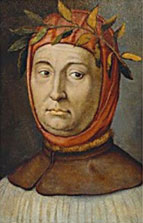 The fourteenth-century poet Petrarca was a learned scholar who tried to link up with the classical era. From the 20th-century point of historicism, this could be catalogued either as retro or as neo. Both assumptions are wrong. Petraca was pioneering. He was the first to write in the native language. 20th century would call it populism, but this is contradicted by another quality of his art, the individualism. Reality and in particular artistic reality are much more complex than any theory is able to catch. After all, neither Donna Laura, nor Francesco Petrarca, nor their love story is of any interest. The poetry is vital only because it is the only tool to find out the handling of the initial stimulus. The core of the matter is intangible, Satie named it the "poetry" of music. The piece I wrote plays an ambiguous game of poetry and harshness, continuity and discontinuity. The immense poetic grace notes of Satie's Gnossienne become whimsical and uneasy. The fourteenth-century poet Petrarca was a learned scholar who tried to link up with the classical era. From the 20th-century point of historicism, this could be catalogued either as retro or as neo. Both assumptions are wrong. Petraca was pioneering. He was the first to write in the native language. 20th century would call it populism, but this is contradicted by another quality of his art, the individualism. Reality and in particular artistic reality are much more complex than any theory is able to catch. After all, neither Donna Laura, nor Francesco Petrarca, nor their love story is of any interest. The poetry is vital only because it is the only tool to find out the handling of the initial stimulus. The core of the matter is intangible, Satie named it the "poetry" of music. The piece I wrote plays an ambiguous game of poetry and harshness, continuity and discontinuity. The immense poetic grace notes of Satie's Gnossienne become whimsical and uneasy.My first idea was to include here Mendelssohn, in his search to link the past with the present. He was one of the first artists in the 19th century to express his admiration for the classical era and to put it forward as a model forever. Then I switched to the more evident Sonetti del Petrarca of Franz Liszt. But the definitive choice was made by Thérèse Malengreau with the singular Saint Francis of Assisi Preaching to the Birds. It is a wonderful piece indeed, which brings Messiaen in mind . So I made my harsh grace notes sound a bit like birds without poetry. The poetry I leave over to Liszt. Commentaar 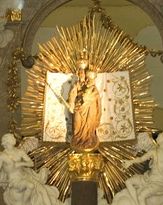 The decisive image of Dante is derived from a picture attributed to Botticelli. He and Leonardo complement each other. In common there is the place of the feminine. The crusades had brought some arabian refinement in Western culture, which resulted in the concept of courtley love. The church reacted with a new devotion to the Madonna. At first sight Primavera or The Birth of Venus or Mars and Venus are placing Botticelli in the camp of the profane. However, as Leonardo pictures his holy women in a sensual and profane way, Botticelli gives his Venuses a neo-platonic meaning. The Birth of Venus should according to some scholars be an allegory for the birth of humankind. The decisive image of Dante is derived from a picture attributed to Botticelli. He and Leonardo complement each other. In common there is the place of the feminine. The crusades had brought some arabian refinement in Western culture, which resulted in the concept of courtley love. The church reacted with a new devotion to the Madonna. At first sight Primavera or The Birth of Venus or Mars and Venus are placing Botticelli in the camp of the profane. However, as Leonardo pictures his holy women in a sensual and profane way, Botticelli gives his Venuses a neo-platonic meaning. The Birth of Venus should according to some scholars be an allegory for the birth of humankind.The gothic sculpture of the madonna at Frydek, a Moravian province town where Smetana has his statue by the way, survived the influences of the Renaissance as of later currents without much trouble, and Janacek made one of his most popular piano pieces under its title. At any moment anyone may jump to any relic from any periode - a disturbing idea for our linear and one-dimensional thinking. Daarenboven Another scary problem of our art history is the eropeo-centrism. Many years ago I already tried to expose it in my Boduognat. We presumably need to limit our concepts in order to see anything at all. Without the concept of Renaissance, many interesting ideas and works of art made by the most interesting men during more than two centuries should escape our attention, or at least we should have no insight in them. However, we should not forget the similar cultural processes that happened in other communities. The idea of searching for "roots" or a "past ideal" and the problem of identity when confronted with a new cultural environment, it is all due to our narrow concepts. You can read at her website the troubles Hyo-shin Na experienced when writing her Variations. Influences seem to accumulate incessantly as long as culture remains continuous. Socrate of Erik Satie, at the core of the theme "Renaissance Revisited" was one of the works admired by John Cage. Because the publisher Max Eschig refused permission to make a piano transcription, Cage decided to subject Satie's composition to his method of "reading through". This new work was called -one of Cage's very best titles- Cheap Imitation. And now, I have to finish the work, still decisions to take, and of course incorporating the Litlle Suite for Christmas by George Crumb, which is inspired by Giotto, as you probably know.  |
||||||||||||||||||||||||||||||||||||||||||||||||||||||||||||||||||||||||||||||||||||||||||||||||||||||||||||||||||||||||||||||||||||||||||||||||||||||||||||||||||||||||||||||||||||||||||||||||||||||||||||||||||||||||||||||||||||||||||||||||||||||||||||||||||||||||||||||||||||||||||||||||||||||||||||||||||||||||||||||||||||||||||||||||||||||||||||||||||||||||||||||||||||||||||||||||||||||||||||||||||||||||||||||||||||||||||||||||||||||||||||||||||||||||||||||||||||||||||||||||||||||||||||||||||||||||||||||||||||||||||||||||||||||||||||||||||||||||||||||||||||||||||||||||||||||||||||||||||||||||||||||||||||||||||||||||||||||||||||||||||||||||||||||||||||||||||||||||||||||||||||||||||||||||||||||||||||||||||||||||||||||||||||||||||||||||||||||||||||||||||||||||||||||||||||||||||||||||||||||||||||||||||||||||||||||||||||||||||||||||||||||||||||||||||||||||||||||||||||||||||||||||||||||||||||||||||||||||||||||||||||||||||||||||||||||||||||||||||||||||||||||||||||||||||||
| | ||||||||||||||||||||||||||||||||||||||||||||||||||||||||||||||||||||||||||||||||||||||||||||||||||||||||||||||||||||||||||||||||||||||||||||||||||||||||||||||||||||||||||||||||||||||||||||||||||||||||||||||||||||||||||||||||||||||||||||||||||||||||||||||||||||||||||||||||||||||||||||||||||||||||||||||||||||||||||||||||||||||||||||||||||||||||||||||||||||||||||||||||||||||||||||||||||||||||||||||||||||||||||||||||||||||||||||||||||||||||||||||||||||||||||||||||||||||||||||||||||||||||||||||||||||||||||||||||||||||||||||||||||||||||||||||||||||||||||||||||||||||||||||||||||||||||||||||||||||||||||||||||||||||||||||||||||||||||||||||||||||||||||||||||||||||||||||||||||||||||||||||||||||||||||||||||||||||||||||||||||||||||||||||||||||||||||||||||||||||||||||||||||||||||||||||||||||||||||||||||||||||||||||||||||||||||||||||||||||||||||||||||||||||||||||||||||||||||||||||||||||||||||||||||||||||||||||||||||||||||||||||||||||||||||||||||||||||||||||||||||||||||||||||||||||
| The Ugly Duckling | ||||||||||||||||||||||||||||||||||||||||||||||||||||||||||||||||||||||||||||||||||||||||||||||||||||||||||||||||||||||||||||||||||||||||||||||||||||||||||||||||||||||||||||||||||||||||||||||||||||||||||||||||||||||||||||||||||||||||||||||||||||||||||||||||||||||||||||||||||||||||||||||||||||||||||||||||||||||||||||||||||||||||||||||||||||||||||||||||||||||||||||||||||||||||||||||||||||||||||||||||||||||||||||||||||||||||||||||||||||||||||||||||||||||||||||||||||||||||||||||||||||||||||||||||||||||||||||||||||||||||||||||||||||||||||||||||||||||||||||||||||||||||||||||||||||||||||||||||||||||||||||||||||||||||||||||||||||||||||||||||||||||||||||||||||||||||||||||||||||||||||||||||||||||||||||||||||||||||||||||||||||||||||||||||||||||||||||||||||||||||||||||||||||||||||||||||||||||||||||||||||||||||||||||||||||||||||||||||||||||||||||||||||||||||||||||||||||||||||||||||||||||||||||||||||||||||||||||||||||||||||||||||||||||||||||||||||||||||||||||||||||||||||||||||||||
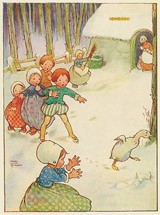 After attending a screening of Buster Keaton's silent film 'Sherlock Holmes Jr', where the Duo Charcuterie (Eric Vandermeulen and Rik Callewaert) played music from my '1001 Sonatas' and my 'Sherlock Holmes Etudes', I decided to also combine two art forms. I always dreamed of writing an opera for puppets, and another dream of mine was to write music for a ballet. I settled on a ballet for puppets.
After attending a screening of Buster Keaton's silent film 'Sherlock Holmes Jr', where the Duo Charcuterie (Eric Vandermeulen and Rik Callewaert) played music from my '1001 Sonatas' and my 'Sherlock Holmes Etudes', I decided to also combine two art forms. I always dreamed of writing an opera for puppets, and another dream of mine was to write music for a ballet. I settled on a ballet for puppets.The theme is Hans Christian Anderson's 'The Ugly Duckling'. The theater group 'Theater Taptoe' already has some brilliant plans for the realization. The premiere is scheduled for Winter 2006. Na een voorstelling van Buster Keaton's Sherlock Holmes Junior met het duo Charcuterie (Rik Callewaert en Eric Vandermeulen) als live-muziek met stukken uit mijn 1001 Sonates en Sherlock Holmes Etudes besloot ik twee oude dromen samen te realiseren. De eerste droom was een poppenopera, de tweede een ballet. Zo begon ik aan een marionetballet op het thema van Het lelijke eendje van Hans Christian Anderson. Theater Taptoe heeft al schitterende plannen voor de realisatie. "Eentje" gaat in première op zaterdag 27 januari 2007 om 14u30 in het kader van het "Kleuterfestival Tielt", een organisatie van C.C. Gildhof. Plaats van optreden: zaal Malpertuis, Stationstraat 25, 8700 Tielt Reserveren kan op het nummer 051 40 29 35 van C.C.Gildhof www.tielt.be |
||||||||||||||||||||||||||||||||||||||||||||||||||||||||||||||||||||||||||||||||||||||||||||||||||||||||||||||||||||||||||||||||||||||||||||||||||||||||||||||||||||||||||||||||||||||||||||||||||||||||||||||||||||||||||||||||||||||||||||||||||||||||||||||||||||||||||||||||||||||||||||||||||||||||||||||||||||||||||||||||||||||||||||||||||||||||||||||||||||||||||||||||||||||||||||||||||||||||||||||||||||||||||||||||||||||||||||||||||||||||||||||||||||||||||||||||||||||||||||||||||||||||||||||||||||||||||||||||||||||||||||||||||||||||||||||||||||||||||||||||||||||||||||||||||||||||||||||||||||||||||||||||||||||||||||||||||||||||||||||||||||||||||||||||||||||||||||||||||||||||||||||||||||||||||||||||||||||||||||||||||||||||||||||||||||||||||||||||||||||||||||||||||||||||||||||||||||||||||||||||||||||||||||||||||||||||||||||||||||||||||||||||||||||||||||||||||||||||||||||||||||||||||||||||||||||||||||||||||||||||||||||||||||||||||||||||||||||||||||||||||||||||||||||||||||
| | ||||||||||||||||||||||||||||||||||||||||||||||||||||||||||||||||||||||||||||||||||||||||||||||||||||||||||||||||||||||||||||||||||||||||||||||||||||||||||||||||||||||||||||||||||||||||||||||||||||||||||||||||||||||||||||||||||||||||||||||||||||||||||||||||||||||||||||||||||||||||||||||||||||||||||||||||||||||||||||||||||||||||||||||||||||||||||||||||||||||||||||||||||||||||||||||||||||||||||||||||||||||||||||||||||||||||||||||||||||||||||||||||||||||||||||||||||||||||||||||||||||||||||||||||||||||||||||||||||||||||||||||||||||||||||||||||||||||||||||||||||||||||||||||||||||||||||||||||||||||||||||||||||||||||||||||||||||||||||||||||||||||||||||||||||||||||||||||||||||||||||||||||||||||||||||||||||||||||||||||||||||||||||||||||||||||||||||||||||||||||||||||||||||||||||||||||||||||||||||||||||||||||||||||||||||||||||||||||||||||||||||||||||||||||||||||||||||||||||||||||||||||||||||||||||||||||||||||||||||||||||||||||||||||||||||||||||||||||||||||||||||||||||||||||||||
| The Beautiful Hours of the Day | ||||||||||||||||||||||||||||||||||||||||||||||||||||||||||||||||||||||||||||||||||||||||||||||||||||||||||||||||||||||||||||||||||||||||||||||||||||||||||||||||||||||||||||||||||||||||||||||||||||||||||||||||||||||||||||||||||||||||||||||||||||||||||||||||||||||||||||||||||||||||||||||||||||||||||||||||||||||||||||||||||||||||||||||||||||||||||||||||||||||||||||||||||||||||||||||||||||||||||||||||||||||||||||||||||||||||||||||||||||||||||||||||||||||||||||||||||||||||||||||||||||||||||||||||||||||||||||||||||||||||||||||||||||||||||||||||||||||||||||||||||||||||||||||||||||||||||||||||||||||||||||||||||||||||||||||||||||||||||||||||||||||||||||||||||||||||||||||||||||||||||||||||||||||||||||||||||||||||||||||||||||||||||||||||||||||||||||||||||||||||||||||||||||||||||||||||||||||||||||||||||||||||||||||||||||||||||||||||||||||||||||||||||||||||||||||||||||||||||||||||||||||||||||||||||||||||||||||||||||||||||||||||||||||||||||||||||||||||||||||||||||||||||||||||||||
| De Mooie Uren van de Dag BBWV 2004.18 Voor Yves Senden. The Beautiful Hours of the Day 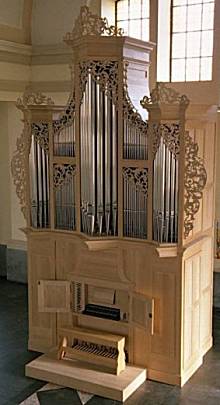 The work will be completed by April 2005, to be premiered in October 2005 on the new organ by Dominique Thomas in Zulte. The organ can be compared to the baroque Silbermann organ, rather than to the romantic symphonic organ. One of its specific features is the tuning. In Spring of 2004, I visited Gedinne with Yves Senden in order to have a look at the Dominique Thomas Organ and consider the implications of its non-tempered tuning. I attempted as best as I could to characterize the different keys, as it was my intention to make full use of its richness. Of course, I had to adjust a bit, because my free tonality cannot be applied to non-tempered tuning without some difficulties. The work will be completed by April 2005, to be premiered in October 2005 on the new organ by Dominique Thomas in Zulte. The organ can be compared to the baroque Silbermann organ, rather than to the romantic symphonic organ. One of its specific features is the tuning. In Spring of 2004, I visited Gedinne with Yves Senden in order to have a look at the Dominique Thomas Organ and consider the implications of its non-tempered tuning. I attempted as best as I could to characterize the different keys, as it was my intention to make full use of its richness. Of course, I had to adjust a bit, because my free tonality cannot be applied to non-tempered tuning without some difficulties.At the time when I was thinking about this work, I also became interested and concerned about the place of so-called serious music in our society, and our way of listening to it. Among the historical instances which illustrate the influence that music has and must have in society is the ancient 'paean'. I ask the performer to play only the paean of the corresponding hour -or some hours. The last one of the 24 paeans can only be played at midnight; in a concert that starts at 8 p.m, the paean of, say, 10 p.m. may not be played. "This [the paean] was a form of communal holy song performed in various circumstances, but especially associated with the idea of purification from injurious elements. One situation in which it was appropriate was plague. It is said that in the seventh century BC, when Sparta was suffering from a plague, an oracle recommended summoning Thaletas, who was a noted composer of paeans from Gortyn in Crete. This was done, and Thaletas successfully delivered the city from the pestilence by means of his music. On a later occasion, in the fourth century, the women of Locri and Rhegium in south Italy were afflicted by a strange madness : they would suddenly jump up in the middle of dinner, hearing the call of a voice, and rush off into the country. The two cities consulted the oracle and were advised to sing twelve paeans a day (probably one every hour, on the hour) for sixty days. This called for a total of 720 paeans, and led to a great increase in the number of paean-writers in the area". (Martin WEST Music Therapy in Antiquity in : Music as Medicine, The History of Music Therapy since Antiquity, ed. Peregrine HORDEN, Ashgate, Aldershot, Brookfield USA, Singapore, Sydney, 2000. ISBN 1 84014 299 5. Pagina 54-55). In een live-uitvoering hoort elke pajan bij zijn eigen uur. Pajan 1 wordt dus om 1 uur 's nachts uitgevoerd. Voor praktische redenen kan men pajanen 1-4 samen uitvoeren om 4 u, 5-8 om 8 u, 9-12 om 12 u, 13-16 om 4 uur in de namiddag, 17-20 om 8 u 's avonds, 21-24 om middernacht. Zelfs groepering 1-8 om 8 u, 9-12 op de middag, 13-20 om 8 u, 21-24 om middernacht is nog in de geest. Dat wil zeggen : de muziek van de pajan heeft zijn eigen uur. De registratie is alleen als suggestie bedoeld. Model stond het Dominique-Thomas-orgel zoals het gebouwd zal worden in Zulte. Het werk is geschreven voor en opgedragen aan Yves Senden. |
||||||||||||||||||||||||||||||||||||||||||||||||||||||||||||||||||||||||||||||||||||||||||||||||||||||||||||||||||||||||||||||||||||||||||||||||||||||||||||||||||||||||||||||||||||||||||||||||||||||||||||||||||||||||||||||||||||||||||||||||||||||||||||||||||||||||||||||||||||||||||||||||||||||||||||||||||||||||||||||||||||||||||||||||||||||||||||||||||||||||||||||||||||||||||||||||||||||||||||||||||||||||||||||||||||||||||||||||||||||||||||||||||||||||||||||||||||||||||||||||||||||||||||||||||||||||||||||||||||||||||||||||||||||||||||||||||||||||||||||||||||||||||||||||||||||||||||||||||||||||||||||||||||||||||||||||||||||||||||||||||||||||||||||||||||||||||||||||||||||||||||||||||||||||||||||||||||||||||||||||||||||||||||||||||||||||||||||||||||||||||||||||||||||||||||||||||||||||||||||||||||||||||||||||||||||||||||||||||||||||||||||||||||||||||||||||||||||||||||||||||||||||||||||||||||||||||||||||||||||||||||||||||||||||||||||||||||||||||||||||||||||||||||||||||||
| | ||||||||||||||||||||||||||||||||||||||||||||||||||||||||||||||||||||||||||||||||||||||||||||||||||||||||||||||||||||||||||||||||||||||||||||||||||||||||||||||||||||||||||||||||||||||||||||||||||||||||||||||||||||||||||||||||||||||||||||||||||||||||||||||||||||||||||||||||||||||||||||||||||||||||||||||||||||||||||||||||||||||||||||||||||||||||||||||||||||||||||||||||||||||||||||||||||||||||||||||||||||||||||||||||||||||||||||||||||||||||||||||||||||||||||||||||||||||||||||||||||||||||||||||||||||||||||||||||||||||||||||||||||||||||||||||||||||||||||||||||||||||||||||||||||||||||||||||||||||||||||||||||||||||||||||||||||||||||||||||||||||||||||||||||||||||||||||||||||||||||||||||||||||||||||||||||||||||||||||||||||||||||||||||||||||||||||||||||||||||||||||||||||||||||||||||||||||||||||||||||||||||||||||||||||||||||||||||||||||||||||||||||||||||||||||||||||||||||||||||||||||||||||||||||||||||||||||||||||||||||||||||||||||||||||||||||||||||||||||||||||||||||||||||||||||
| The Floating World | ||||||||||||||||||||||||||||||||||||||||||||||||||||||||||||||||||||||||||||||||||||||||||||||||||||||||||||||||||||||||||||||||||||||||||||||||||||||||||||||||||||||||||||||||||||||||||||||||||||||||||||||||||||||||||||||||||||||||||||||||||||||||||||||||||||||||||||||||||||||||||||||||||||||||||||||||||||||||||||||||||||||||||||||||||||||||||||||||||||||||||||||||||||||||||||||||||||||||||||||||||||||||||||||||||||||||||||||||||||||||||||||||||||||||||||||||||||||||||||||||||||||||||||||||||||||||||||||||||||||||||||||||||||||||||||||||||||||||||||||||||||||||||||||||||||||||||||||||||||||||||||||||||||||||||||||||||||||||||||||||||||||||||||||||||||||||||||||||||||||||||||||||||||||||||||||||||||||||||||||||||||||||||||||||||||||||||||||||||||||||||||||||||||||||||||||||||||||||||||||||||||||||||||||||||||||||||||||||||||||||||||||||||||||||||||||||||||||||||||||||||||||||||||||||||||||||||||||||||||||||||||||||||||||||||||||||||||||||||||||||||||||||||||||||||||
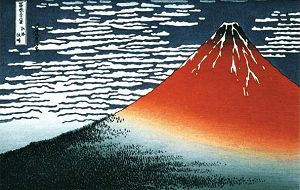 Woensdag 17 november 2004 om 20.30 in De Rode Pomp, Nieuwpoortstraat, Gent. Thomas Schultz, piano.
Woensdag 17 november 2004 om 20.30 in De Rode Pomp, Nieuwpoortstraat, Gent. Thomas Schultz, piano.Wednesday November 17th 2004 at 8.30 p.m. De Rode Pomp, Nieuwpoortstraat, Ghent. Thomas Shultz, piano. The Floating World BBWV 2004.05 Opdracht van Stanford University, California, voor Thomas Schultz. De omschrijving van de opdracht was een pianowerk van ongeveer twintig minuten, dat uitgevoerd zou worden door Thomas Schultz, en dat op het programma zou passen bij The People United Will Never Be Defeated van Frederic Rzewski. Dit is een van de belangrijkste pianowerken van de 20ste eeuw en duurt een uur. Als ik aan dit werk denk, vergelijk ik onwillekeurig de politiek geëngageerde  bedoeling ervan en het succes van dat engagement met het succes van het pianowerk. In onze wereld van vandaag klinkt het revolutielied zoals de Hohe Messe van Bach geklonken moet hebben in Sovjet-Rusland. Het is een situatie die op onvergetelijke manier werd neergeschreven in de debuutroman van Kazuo Ishiguro , getiteld An Artist of the Floating World. Deze vliedende wereld is in heel andere zin ook onderwerp van de Japanse Ukiyo-e, houtgravuren die de vergankelijkheid van het levensgenoegen weergeven. bedoeling ervan en het succes van dat engagement met het succes van het pianowerk. In onze wereld van vandaag klinkt het revolutielied zoals de Hohe Messe van Bach geklonken moet hebben in Sovjet-Rusland. Het is een situatie die op onvergetelijke manier werd neergeschreven in de debuutroman van Kazuo Ishiguro , getiteld An Artist of the Floating World. Deze vliedende wereld is in heel andere zin ook onderwerp van de Japanse Ukiyo-e, houtgravuren die de vergankelijkheid van het levensgenoegen weergeven.Het pianowerk duurt ruim twintig minuten. Het is logischer en consistenter opgebouwd, opvallend bij meer recente werken zoals ook bijvoorbeeld Peace for Piano dat Joseph Kubera in New York creëerde. Dit komt door algemene ontwikkelingen in onze vliedende wereld, die de postmoderne geestelijke vlugheid en veelheid met uniformisering en machtspolitiek in het defensief hebben gedrongen. Logica en consistentie zijn een antwoord daarop, en al is logica het begin van geweld, toch blijft zij on-aristotelisch op meerdere maximes berusten zodat de pluraliteit gered wordt. Het komt ook door de specifieke opdracht om samen met The People United geprogrammeerd te worden, dat door zijn kracht en omvang weinig ruimte laat. The Floating World (BBWV 2004.05) has been commissioned by Stanford University and is dedicated to Thomas Schultz. I was been asked for a piano piece of some twenty minutes, which could be placed at the same programme as The People United Will Never Be  Defeated by Frederic Rzewski. This is one of the very great pieces of piano music of the 20th century, and a typical example of music with an explicit content, in casu political involvement. Pondering about the solution I should take, I felt stronger and stronger the discrepancy between the worldwide success of the piece and the ideas behind it. Our situation today, so different to the late sixties, shed another light to everything. The floating world has been brillantly described in Kazuo Ishiguro' s wonderful first novel, An Artist of the Floating World. His title of course alludes to the Ukiyo-e, the Japanese woodprints illustrating the short lived pleasures of life. Defeated by Frederic Rzewski. This is one of the very great pieces of piano music of the 20th century, and a typical example of music with an explicit content, in casu political involvement. Pondering about the solution I should take, I felt stronger and stronger the discrepancy between the worldwide success of the piece and the ideas behind it. Our situation today, so different to the late sixties, shed another light to everything. The floating world has been brillantly described in Kazuo Ishiguro' s wonderful first novel, An Artist of the Floating World. His title of course alludes to the Ukiyo-e, the Japanese woodprints illustrating the short lived pleasures of life.So I tried to write a piece that is not just another piece that may harmonize with The People United, but that reflects the awareness of a floating world. That idea suited also better my technique of free tonality , now applied to a concatenation of changes in different layers - there seems to be great stability at one layer, instability at the next one. |
||||||||||||||||||||||||||||||||||||||||||||||||||||||||||||||||||||||||||||||||||||||||||||||||||||||||||||||||||||||||||||||||||||||||||||||||||||||||||||||||||||||||||||||||||||||||||||||||||||||||||||||||||||||||||||||||||||||||||||||||||||||||||||||||||||||||||||||||||||||||||||||||||||||||||||||||||||||||||||||||||||||||||||||||||||||||||||||||||||||||||||||||||||||||||||||||||||||||||||||||||||||||||||||||||||||||||||||||||||||||||||||||||||||||||||||||||||||||||||||||||||||||||||||||||||||||||||||||||||||||||||||||||||||||||||||||||||||||||||||||||||||||||||||||||||||||||||||||||||||||||||||||||||||||||||||||||||||||||||||||||||||||||||||||||||||||||||||||||||||||||||||||||||||||||||||||||||||||||||||||||||||||||||||||||||||||||||||||||||||||||||||||||||||||||||||||||||||||||||||||||||||||||||||||||||||||||||||||||||||||||||||||||||||||||||||||||||||||||||||||||||||||||||||||||||||||||||||||||||||||||||||||||||||||||||||||||||||||||||||||||||||||||||||||||||
| | ||||||||||||||||||||||||||||||||||||||||||||||||||||||||||||||||||||||||||||||||||||||||||||||||||||||||||||||||||||||||||||||||||||||||||||||||||||||||||||||||||||||||||||||||||||||||||||||||||||||||||||||||||||||||||||||||||||||||||||||||||||||||||||||||||||||||||||||||||||||||||||||||||||||||||||||||||||||||||||||||||||||||||||||||||||||||||||||||||||||||||||||||||||||||||||||||||||||||||||||||||||||||||||||||||||||||||||||||||||||||||||||||||||||||||||||||||||||||||||||||||||||||||||||||||||||||||||||||||||||||||||||||||||||||||||||||||||||||||||||||||||||||||||||||||||||||||||||||||||||||||||||||||||||||||||||||||||||||||||||||||||||||||||||||||||||||||||||||||||||||||||||||||||||||||||||||||||||||||||||||||||||||||||||||||||||||||||||||||||||||||||||||||||||||||||||||||||||||||||||||||||||||||||||||||||||||||||||||||||||||||||||||||||||||||||||||||||||||||||||||||||||||||||||||||||||||||||||||||||||||||||||||||||||||||||||||||||||||||||||||||||||||||||||||||||
| Station Play | ||||||||||||||||||||||||||||||||||||||||||||||||||||||||||||||||||||||||||||||||||||||||||||||||||||||||||||||||||||||||||||||||||||||||||||||||||||||||||||||||||||||||||||||||||||||||||||||||||||||||||||||||||||||||||||||||||||||||||||||||||||||||||||||||||||||||||||||||||||||||||||||||||||||||||||||||||||||||||||||||||||||||||||||||||||||||||||||||||||||||||||||||||||||||||||||||||||||||||||||||||||||||||||||||||||||||||||||||||||||||||||||||||||||||||||||||||||||||||||||||||||||||||||||||||||||||||||||||||||||||||||||||||||||||||||||||||||||||||||||||||||||||||||||||||||||||||||||||||||||||||||||||||||||||||||||||||||||||||||||||||||||||||||||||||||||||||||||||||||||||||||||||||||||||||||||||||||||||||||||||||||||||||||||||||||||||||||||||||||||||||||||||||||||||||||||||||||||||||||||||||||||||||||||||||||||||||||||||||||||||||||||||||||||||||||||||||||||||||||||||||||||||||||||||||||||||||||||||||||||||||||||||||||||||||||||||||||||||||||||||||||||||||||||||||||
|
Openingsconcert van de tentoonstelling Gent Heen/Terug Gent, Sint-Pietersstation, 26 april, 21 uur  Met 20 muzikanten verspreid over het hele gebouw en een 15-koppig koor in de inkomsthal, neemt componist Boudewijn Buckinx ons mee op een muzikale reis die zowel refereert naar Santiago de Compostela, de Wereldtentoonstelling van 1913 en 'A la recherche du temps perdu' als naar het station die als utilitaire, pluralistische tempel iedereen toelaat afzonderlijk zijn perron op te zoeken en zo tientallen, honderden of duizenden kilometers verder zijn bestemming te bereiken. Met 20 muzikanten verspreid over het hele gebouw en een 15-koppig koor in de inkomsthal, neemt componist Boudewijn Buckinx ons mee op een muzikale reis die zowel refereert naar Santiago de Compostela, de Wereldtentoonstelling van 1913 en 'A la recherche du temps perdu' als naar het station die als utilitaire, pluralistische tempel iedereen toelaat afzonderlijk zijn perron op te zoeken en zo tientallen, honderden of duizenden kilometers verder zijn bestemming te bereiken.Met lichteffecten en videobeelden zorgt Trefpunt voor een optimale begeleiding van de muziek. Maar reizen is kiezen... Terwijl 'Station Play' de grote publieke ruimtes van het station inneemt, worden in de buffetten kleinschaliger en intiemere stukken opgevoerd. In het buffet speelt een 'mobiele' violist een muzikale 'Stationsroman', terwijl men in het aanpalende restaurant kan genieten van een geraffineerd salonstuk voor piano. De tentoonstelling Gent Heen/Terug is een reis door de collecties van 12 Gentse archieven. De rode draad ? Reizen en reizigers, thema's die worden uitgewerkt in de wachthokjes op de perrons van het Sint-Pietersstation. Die worden voor de gelegenheid omgebouwd tot mini-tentoonstellingspaviljoenen, een knipoog naar de wereldtentoonstelling van 1913, toen Gent heel even het centrum van de wereld was en ruim 6 miljoen bezoekers mocht ontvangen ! Gratis toegang voor tentoonstelling en concert Organisatie concert en evenement : Trefpunt vzw Compositie : Boudewijn Buckinx Dirigent : Edwig Abrath Solisten : Daan Vandewalle (piano) en Paul Klinck (viool) Organisatie tentoonstelling : Gent Cultuurstad vzw ism, AMSAB - Instituut voor Sociale Geschiedenis, Archief en Museum van de Zusters van Liefde J.M., Archief van de Broeders van Liefde, Archief Bisdom Oost-Vlaanderen, Archief Universiteit Gent, Liberaal Archief, NMBS Station Gent Sint-Pieters, Bibliotheek en Archief van het Augustijnenklooster Sint-Stefanus, Bibliotheek en Archief Conservatorium - Hogeschool Gent, Provinciaal Archief Oost-Vlaanderen, Rijksarchief, Stadsarchief Gent. |
||||||||||||||||||||||||||||||||||||||||||||||||||||||||||||||||||||||||||||||||||||||||||||||||||||||||||||||||||||||||||||||||||||||||||||||||||||||||||||||||||||||||||||||||||||||||||||||||||||||||||||||||||||||||||||||||||||||||||||||||||||||||||||||||||||||||||||||||||||||||||||||||||||||||||||||||||||||||||||||||||||||||||||||||||||||||||||||||||||||||||||||||||||||||||||||||||||||||||||||||||||||||||||||||||||||||||||||||||||||||||||||||||||||||||||||||||||||||||||||||||||||||||||||||||||||||||||||||||||||||||||||||||||||||||||||||||||||||||||||||||||||||||||||||||||||||||||||||||||||||||||||||||||||||||||||||||||||||||||||||||||||||||||||||||||||||||||||||||||||||||||||||||||||||||||||||||||||||||||||||||||||||||||||||||||||||||||||||||||||||||||||||||||||||||||||||||||||||||||||||||||||||||||||||||||||||||||||||||||||||||||||||||||||||||||||||||||||||||||||||||||||||||||||||||||||||||||||||||||||||||||||||||||||||||||||||||||||||||||||||||||||||||||||||||||
| | ||||||||||||||||||||||||||||||||||||||||||||||||||||||||||||||||||||||||||||||||||||||||||||||||||||||||||||||||||||||||||||||||||||||||||||||||||||||||||||||||||||||||||||||||||||||||||||||||||||||||||||||||||||||||||||||||||||||||||||||||||||||||||||||||||||||||||||||||||||||||||||||||||||||||||||||||||||||||||||||||||||||||||||||||||||||||||||||||||||||||||||||||||||||||||||||||||||||||||||||||||||||||||||||||||||||||||||||||||||||||||||||||||||||||||||||||||||||||||||||||||||||||||||||||||||||||||||||||||||||||||||||||||||||||||||||||||||||||||||||||||||||||||||||||||||||||||||||||||||||||||||||||||||||||||||||||||||||||||||||||||||||||||||||||||||||||||||||||||||||||||||||||||||||||||||||||||||||||||||||||||||||||||||||||||||||||||||||||||||||||||||||||||||||||||||||||||||||||||||||||||||||||||||||||||||||||||||||||||||||||||||||||||||||||||||||||||||||||||||||||||||||||||||||||||||||||||||||||||||||||||||||||||||||||||||||||||||||||||||||||||||||||||||||||||||
| Blauwe Galm | ||||||||||||||||||||||||||||||||||||||||||||||||||||||||||||||||||||||||||||||||||||||||||||||||||||||||||||||||||||||||||||||||||||||||||||||||||||||||||||||||||||||||||||||||||||||||||||||||||||||||||||||||||||||||||||||||||||||||||||||||||||||||||||||||||||||||||||||||||||||||||||||||||||||||||||||||||||||||||||||||||||||||||||||||||||||||||||||||||||||||||||||||||||||||||||||||||||||||||||||||||||||||||||||||||||||||||||||||||||||||||||||||||||||||||||||||||||||||||||||||||||||||||||||||||||||||||||||||||||||||||||||||||||||||||||||||||||||||||||||||||||||||||||||||||||||||||||||||||||||||||||||||||||||||||||||||||||||||||||||||||||||||||||||||||||||||||||||||||||||||||||||||||||||||||||||||||||||||||||||||||||||||||||||||||||||||||||||||||||||||||||||||||||||||||||||||||||||||||||||||||||||||||||||||||||||||||||||||||||||||||||||||||||||||||||||||||||||||||||||||||||||||||||||||||||||||||||||||||||||||||||||||||||||||||||||||||||||||||||||||||||||||||||||||||||
|
||||||||||||||||||||||||||||||||||||||||||||||||||||||||||||||||||||||||||||||||||||||||||||||||||||||||||||||||||||||||||||||||||||||||||||||||||||||||||||||||||||||||||||||||||||||||||||||||||||||||||||||||||||||||||||||||||||||||||||||||||||||||||||||||||||||||||||||||||||||||||||||||||||||||||||||||||||||||||||||||||||||||||||||||||||||||||||||||||||||||||||||||||||||||||||||||||||||||||||||||||||||||||||||||||||||||||||||||||||||||||||||||||||||||||||||||||||||||||||||||||||||||||||||||||||||||||||||||||||||||||||||||||||||||||||||||||||||||||||||||||||||||||||||||||||||||||||||||||||||||||||||||||||||||||||||||||||||||||||||||||||||||||||||||||||||||||||||||||||||||||||||||||||||||||||||||||||||||||||||||||||||||||||||||||||||||||||||||||||||||||||||||||||||||||||||||||||||||||||||||||||||||||||||||||||||||||||||||||||||||||||||||||||||||||||||||||||||||||||||||||||||||||||||||||||||||||||||||||||||||||||||||||||||||||||||||||||||||||||||||||||||||||||||||||||
| | ||||||||||||||||||||||||||||||||||||||||||||||||||||||||||||||||||||||||||||||||||||||||||||||||||||||||||||||||||||||||||||||||||||||||||||||||||||||||||||||||||||||||||||||||||||||||||||||||||||||||||||||||||||||||||||||||||||||||||||||||||||||||||||||||||||||||||||||||||||||||||||||||||||||||||||||||||||||||||||||||||||||||||||||||||||||||||||||||||||||||||||||||||||||||||||||||||||||||||||||||||||||||||||||||||||||||||||||||||||||||||||||||||||||||||||||||||||||||||||||||||||||||||||||||||||||||||||||||||||||||||||||||||||||||||||||||||||||||||||||||||||||||||||||||||||||||||||||||||||||||||||||||||||||||||||||||||||||||||||||||||||||||||||||||||||||||||||||||||||||||||||||||||||||||||||||||||||||||||||||||||||||||||||||||||||||||||||||||||||||||||||||||||||||||||||||||||||||||||||||||||||||||||||||||||||||||||||||||||||||||||||||||||||||||||||||||||||||||||||||||||||||||||||||||||||||||||||||||||||||||||||||||||||||||||||||||||||||||||||||||||||||||||||||||||||
|
Dhammapada een kameropera in één bedrijf |
||||||||||||||||||||||||||||||||||||||||||||||||||||||||||||||||||||||||||||||||||||||||||||||||||||||||||||||||||||||||||||||||||||||||||||||||||||||||||||||||||||||||||||||||||||||||||||||||||||||||||||||||||||||||||||||||||||||||||||||||||||||||||||||||||||||||||||||||||||||||||||||||||||||||||||||||||||||||||||||||||||||||||||||||||||||||||||||||||||||||||||||||||||||||||||||||||||||||||||||||||||||||||||||||||||||||||||||||||||||||||||||||||||||||||||||||||||||||||||||||||||||||||||||||||||||||||||||||||||||||||||||||||||||||||||||||||||||||||||||||||||||||||||||||||||||||||||||||||||||||||||||||||||||||||||||||||||||||||||||||||||||||||||||||||||||||||||||||||||||||||||||||||||||||||||||||||||||||||||||||||||||||||||||||||||||||||||||||||||||||||||||||||||||||||||||||||||||||||||||||||||||||||||||||||||||||||||||||||||||||||||||||||||||||||||||||||||||||||||||||||||||||||||||||||||||||||||||||||||||||||||||||||||||||||||||||||||||||||||||||||||||||||||||||||||
|
|
||||||||||||||||||||||||||||||||||||||||||||||||||||||||||||||||||||||||||||||||||||||||||||||||||||||||||||||||||||||||||||||||||||||||||||||||||||||||||||||||||||||||||||||||||||||||||||||||||||||||||||||||||||||||||||||||||||||||||||||||||||||||||||||||||||||||||||||||||||||||||||||||||||||||||||||||||||||||||||||||||||||||||||||||||||||||||||||||||||||||||||||||||||||||||||||||||||||||||||||||||||||||||||||||||||||||||||||||||||||||||||||||||||||||||||||||||||||||||||||||||||||||||||||||||||||||||||||||||||||||||||||||||||||||||||||||||||||||||||||||||||||||||||||||||||||||||||||||||||||||||||||||||||||||||||||||||||||||||||||||||||||||||||||||||||||||||||||||||||||||||||||||||||||||||||||||||||||||||||||||||||||||||||||||||||||||||||||||||||||||||||||||||||||||||||||||||||||||||||||||||||||||||||||||||||||||||||||||||||||||||||||||||||||||||||||||||||||||||||||||||||||||||||||||||||||||||||||||||||||||||||||||||||||||||||||||||||||||||||||||||||||||||||||||||||
